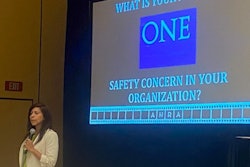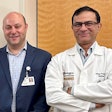
Over half of radiologists engage with peer learning in some capacity, a survey study published May 23 in the Journal of the American College of Radiology has found.
A group led by Dr. Richard Sharpe Jr. from the American College of Radiology (ACR) peer-learning committee reported that radiologists who use peer learning are likely to recommend it to colleagues. But they also found that radiologists practicing in rural environments are less likely to use peer learning.
"This supports continued dedication of resources to understanding the added value of peer learning, identifying best practices, and facilitating implementation," Sharpe and co-authors wrote.
Radiology practices in the U.S. and Europe have adopted peer learning in recent years as an alternative to score-based peer review. Previous research shows that peer learning reduces limitations of score-based peer review by being more engaging, inclusive, highly valued by radiologists, and resulting in quality improvement.
Sharpe and colleagues sought to understand perceptions of peer learning among radiologists through a survey of ACR members in the first quarter of 2022. They received responses from 1,163 member radiologists for the study.
The survey showed the following:
- 53% of respondents currently use peer learning.
- Users of peer learning are younger, with a median age of 45 to 54 compared with 55 to 64 for nonusers (p < 0.01).
- More female radiologists use peer learning than their male colleagues (29% vs. 23%, p < 0.05).
- Those who practice in urban settings are more likely to use peer learning compared with those in rural settings (52% vs. 40%, p = 0.0002).
The survey results also indicated that 89% of radiologists who use peer learning feel it enables an improved culture of safety and wellness and 86% that it advances initiatives for continuous improvement.
Peer-learning users were more likely to identify learning opportunities from routine clinical practice than nonusers (83% vs. 50%), and they were more likely to engage in programming inclusive of more team members, as well as implement more practice improvement projects than nonusers.
Finally, the researchers found that 65% of peer-learning users were likely to recommend it to colleagues.
The team urged future research to understand and address barriers to adopting peer learning in rural practices, and educational initiatives that would increase radiologist awareness that peer learning is accepted by accreditation and certification bodies.



















